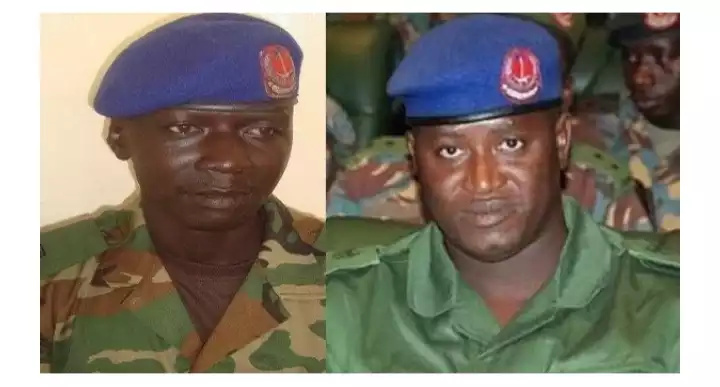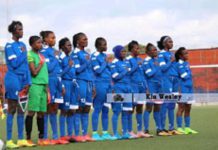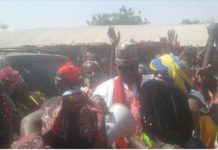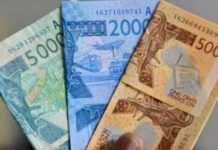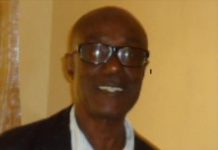Gambians need to think hard about whether or not we need the Gambia Armed Forces (GAF)
Early one morning, about 30 years ago, I asked myself a very uncomfortable question.
I was in my official vehicle, a four-wheel drive LandRover, being driven by my driver, along with other people we had given a ride, from Sapu Agricultural Station to Banjul. I was a researcher with the then Department of Agricultural Research (DAR), and like my fellow researchers and senior officials in Sapu, I had many government-provided perks and privileges, such as a free, fully-furnished house, free water, free electricity, and a free, government-provided, government-maintained, and government-fueled official vehicle. Not to mention the relatively comfortable salary.
I then thought to myself: “What am I doing for our country to deserve all this?” I then, in my mind, went through a check list of my work as a DAR researcher (conducting soils and crops research, collecting and analyzing data, attending meetings and conferences, as well as preparing and presenting reports), and came to the uncomfortable conclusion that my work had very little, if any, impact on the lives of my people in Ballanghar, and other Gambian farmers we were supposed to be helping. I felt an emptiness and sense that I was part of a group of people who were exploiting the country, and had nothing to offer other than an insatiable appetite for entitlements. Fortunately, I didn’t have to ponder my sense of shame for long because shortly after, I left The Gambia for further studies in the US.
I have been pondering the same question with regards to the Gambian military, which has come under the limelight in testimonies at the Truth, Reconciliation, and Reparations Commission (TRRC), and on-going efforts to reform the security sector in the country. The question is this: what is the Gambian military doing for our country to deserve all the perks they get, and the resources we are spending on them? To help answer it, I thought it would help to provide the facts and figures, including a historical perspective on how we got here in the first place. I hope that when you are done reading this, you will be able to make up your mind about whether or not the Gambia Armed Forces (GAF), specifically the Gambia National Army (GNA), the Republican National Guard (RNG), and the State Security Service (SIS) should have a place in the new, post-dictatorship and democratic Gambia.
The Gambia Armed Forces
The birth of what presently is the Gambia Armed Forces (GAF), also called the Armed Forces of The Gambia can be traced to the Gambia Regiment, a British Army colonial regiment that existed between 1901 and 1958, and consisted of recruits from Gambia Colony and Protectorate. The Gambia Regiment was known as the Gambia Company from 1901 to 1939, and from 1945 to 1950, and saw action in both World War I and World War II. At the end of WW II in 1945, the Gambia Regiment was demobilized, and ultimately disbanded in 1957.
The Gambia Regiment was replaced in 1958 by the Gambia Field Force, a paramilitary unit of the police, consisting of about 140 men at Independence in 1965, and increasing to around 500 in 1980. In view of the small size of the country, and the fact that it is surrounded on all sides except the Atlantic coast by Senegal, with which it had a mutual defense pact shortly after Independence in 1965, The Gambia gave little thought to the establishment of an army to protect its national security.
The country thus had a rude shock in July, 1981, when a rag-tag group of Field Force rebels led by a leftist civilian, Kukoi Samba Sanyang, rose up against the government of President Sir Dawda K. Jawara. The coup attempt was put down after about four days, thanks to the intervention of Senegalese troops who were invited by President Jawara, on the basis of the mutual defense treaty with Senegal. Despite the relatively short duration of the coup attempt, an estimated 500 lives (including 33 Senegalese soldiers) were lost, many of them civilians.
Following the 1981 coup attempt, Senegal and The Gambia signed the Kaur Declaration, which led to the establishment of the Senegambia Confederation in February, 1982. A major requirement and outcome of the Confederal Agreement was the creation of a Confederal Army and a Confederal Gendarmerie. Despite his support for the Senegambia Confederation, President Jawara was not keen on the establishment of a Gambian army, and insisted that the military should be “as small as possible.”
In any case, The Gambia was not able to contribute troops to the confederal forces until 1985, after the required institutional and legal framework was created, and the required personnel recruited and trained. Thus, a Ministry of Defence was created in 1982, and the Gambia Armed Forces Act 1985 which identified four branches of the Gambian military (the Army, Navy, Air Force and Gendarmerie) was passed. In addition, the Gambia National Army (GNA) was formed from remnants of the former Field Force and new recruits, and was trained by the British. The Gambia National Gendarmerie (GNG), on the other hand, was based on the French military model, and trained mainly by the Senegalese.
This combination of British and French military structures in the GAF led to a tense relationship between the GNA and the GNG. Other sources of tension in the Gambian military were the fact that Gambian soldiers in the Confederal Army were better paid than those in the GNA and the GNG, and the resulting favoritism and nepotism in selecting Gambian troops to join the Confederal Army. Gambian soldiers in the Confederal Army also envied their Senegalese colleagues who were of higher rank, and responsible for key duties such as guarding the President, as well as the seaport and airport. In 1989, the Senegambia Confederation collapsed suddenly, and Senegal abruptly withdrew its 300 troops stationed in The Gambia as part of the Confederal Army. As such, President Jawara was left with no choice but to rely on Gambian forces for both internal and external security.
Keeping the Peace Abroad, Causing Trouble At Home
As the Senegambia Confederation was coming apart, Liberia was sliding into what would turn out to be a long and brutal period of civil war and instability. In a bid to stem Liberia’s descent into chaos, the Economic Community of West African States (ECOWAS), under the Chairmanship of President Jawara, decided to send troops from Gambia, Ghana, Nigeria and Sierra Leone as the ECOWAS Monitoring Group (ECOMOG). One hundred and five Gambian troops departed The Gambia on August 1990 for Liberia amid a cloud of doubts about their readiness for the mission, and questions about the goals of the mission.
The first Gambian contingent deployed in Liberia as part of ECOMOG suffered two casualties who were killed in action. In addition, they were disappointed that the monthly pay they were expecting when they left home for Liberia was drastically reduced after they arrived at their assembly point in Sierra Leone. For this reason, the Gambian soldiers had a lot of grudges when they returned home in April 1991.
About two months after returning home, the first contingent of Gambian soldiers deployed to ECOMOG took to the streets in June 1991 to protest against the non-payment of allowances due to them for their service in Liberia. This was the first mutiny in The Gambia and President Jawara quickly met with the mutineers. He agreed to pay their allowances, and promised to address other requests they had. President Jawara also retired the GNA commanding officer, Colonel Momodou Ndow Njie, in a bid to further appease the mutineers.
Shortly after the retirement of Col. Njie, government announced that a Nigerian Army Training Assistance Group (NATAG) would be coming to train and equip the GNA. However, the Nigerian team did not arrive in The Gambia until about nine months after the announcement of their impending arrival. Meanwhile, the GNA continued to be disgruntled, and their discontentment boiled over again in February, 1993, when soldiers in the second Gambian contingent to be deployed for ECOMOG duties in Liberia staged a mutiny. Again, the soldiers mutinied to protest the non-payment of allowances from their ECOMOG deployment. This mutiny was, however, quickly put down thanks to the intervention of the Gendarmerie. The mutineers were court martialed, and those found guilty (most of them) were handed sentences ranging from fines to dismissals.
The arrival of the NATAG contingent in March 1992 created more grief in the GNA, which was placed under the command of Nigerian officers. In addition, many GNA soldiers felt that by having the Nigerians take over command of the GNA, President Jawara had shown his mistrust of Gambian soldiers. The GNA soldiers concluded that prospects for their promotion and career development would be hindered by the senior NATAG troops who would fill up the top ranks of the GNA. Although the NATAG worked to professionalize and arm the GNA, they had more comforts and perks, such as better accommodation and pay than Gambian soldiers, thus increasing the dissatisfaction of the later.
Many GNA soldiers were also not happy with the rampant corruption and favoritism that existed in the GNA, as well as their poor living conditions. In addition, government disbanded the Gambia National Gendarmerie (GNG) in February 1992, and merged some of its members into the Tactical Support Group (TSG), a new unit in the Gambia Police Force (GPF). This was a particularly unpopular decision because the GPF had less pay and prestige than the GNA. Many members of the GNG (including one Lieutenant Yahya Jammeh) requested, and got transfers to the GNA.
The merger of the GNG into the GPF also meant that the GNG could no longer serve as a counter weight to the GNA, as it did when it thwarted the 1991, and 1992 GNA mutinies. The NATAG contingent did not help matters either, because many in the GNG blamed them for over-arming the GNA. In addition many GNG soldiers were fuming after a contingent of them were disarmed when they went to welcome President Jawara from a foreign trip in July, 1994.
Ironically, the GNA soldiers were disarmed because of allegations that they were planning to stage a coup d’etat against President Jawara’s government. These allegations were not unfounded, in view of the prevailing malaise that existed in the country in July 1994, with both civilians and the military dissatisfied with the way the country was run by President Jawara. In the eyes of many, it was a question of when, not if, President Jawara would be overthrown.
Enter Jammeh
As fate would have it, allegations about coup plots against the Jawara government were borne out on July 22, 1994 when soldiers led by Lieutenant Yahya Jammeh took key installations, including the national radio and the airport, disarmed the TSG in Bakau, and marched to the State House which had earlier been hastily vacated by President Jawara. Thus ended what then was Africa’s longest surviving democracy, and the rule of the longest serving national leader on the continent.
A few days after the coup, the Armed Forces Provisional Ruling Council (AFPRC), amilitary ruling council, was formed, with Lt. Jammeh as its Chairman. Other AFPRC members were Captain Sana B. Sabally (Vice Chairman), as well as Captains Edward Singhateh and Yankuba Touray. The AFPRC said that ‘rampant corruption and the retrogressive nature of the country’ was the reason for their coup which, Jammeh promised, would be a “coup with a difference.” Indeed.
The AFPRC ruled with an iron fist and a steady stream of Decrees, the first of which (Decree №1) abrogated the 1970 Constitution of The Gambia. Other notorious Decrees that followed were Decree №3 (July 1994), which empowered the Minister of Interior to detain people indefinitely, and prohibited Habeas Corpus proceedings against on any detention made under it. In addition, Decrees №30 and 31 abolished the Bill of Rights in the 1970 Constitution, Decree №45 of 1995 created the notorious National Intelligence Agency (NIA), and Decree 52 which restored the death penalty. The AFPRC also introduced, in 1996, Decrees 70 and 71 which amended the 1944 Newspaper Act, and effectively killed press freedom — and journalism — in the country. Decree №89 (also in 1996), retained the ban on three main political parties in the country, and lifted that on two others. In all, the AFPRC issued about 90 Decrees (or an average of 3 Decrees per month) in the twenty seven and a half months starting from July 1994 and ending in November 1996, when the Jammeh became a civilian president following the 1996 presidential elections.
In addition to instituting a Dictatorship by Decrees, Jammeh extended his largesse and appeasements to the Gambian military. Specifically, he handed out pay rises and promotions to military personnel, made improvements to the Yundum barracks, introduced the Gambia Army Revolving Loan Scheme, and offered educational opportunities to educational personnel. The Gambian military also received special treatment over allocation of land for residential purposes. In addition, the NATAG contingent, which was very unpopular with many in the Gambian military, left the country after the coup.
Both civilians and military personnel suffered many excesses during the military rule of the AFPRC. The first hint of the worst that was to come from Jammeh was the alleged coup attempt of November 1994. As testimonies at the Truth, Reconciliation and Reparations Commission (TRRC) have shown, the AFPRC indulged in the cold-blooded and gruesome murder of 11 military personnel, some of whom were falsely accused of plotting against the AFPRC. Other, wrongful imprisonments, tortures, and extra-judicial killings followed, including the detention in January 1995 of Captain Sabally, and Saidibou Hydara, allegedly over disagreements about how long the AFPRC should rule. Both men were tortured while in detention, and Hydara died while in detention in June, 1995.
Civilians also suffered untold horrors and injustices under the AFPRC regime, starting with the detention and torture of officials of the Jawara government. Omar Amadou Jallow (commonly called “OJ”) the Minister of Agriculture under the Jawara government was first detained, along with other senior Jawara government officials, in 1994 shortly after the AFPRC coup. Although he was released, he was re-arrested in October 1995 (along with about 35 alleged supporters of the PPP) and tortured. Twenty five of the alleged PPP supporters were charged with sedition were released on bail in January 1996, only to be re-arrested the day they were released. Over the course of the 22 years of Jammeh’s rule, OJ was detained 22 times, or an average of once a year.
In August 1994, Halifa Sallah and Sidia Jatta were arrested following the banning of Foroyaa, the official organ of their party, the People’s Democratic Organization for Independence and Socialism (PDOIS). Although they were released after a few days in detention, the arrests set the tone for the following 22 years of Jammeh’s rule. Members of the United Democratic Party (UDP) suffered a similar fate, with many of them being attacked, arrested, and tortured by the AFPRC government and its soldiers around the September 1996 elections which resulted in the transfer of power to a civilian government.
The media and human rights groups also faced the wrath of the AFPRC military rule. In addition to banning Foroyaa, the AFPRC government arrested two journalists in May 1996 for publishing an article about the Gambia Police Force, and a month later, a reporter for the The Point newspaper was arrested. In August 1996, a new Constitution was overwhelmingly approved by 70 percent of voters, paving the way for the return of the country to civilian rule. But Jammeh was not going to be left behind, so he promoted himself from Captain to Colonel later the same month, and retired from the Gambian Army.
Although Jammeh initially said he was not going to present himself as a candidate in the September 1996 presidential elections, he reversed that decision, and contested the elections under the banner of the Alliance for Patriotic Reorientation and Construction, (APRC) the political party he founded. Jammeh won the elections, with 56 percent of the votes, and beating his main rival Ousainou Darboe of the UDP. As was the case with the presidential elections, the main political parties during Jawara’s rule (the PPP, NCP, and GPP) were banned by Decree 89 from participating in the parliamentary elections held in January, 1997. It is thus not surprising that the APRC won the parliamentary elections resoundingly, with 33 out of the 45 elected seats in the National Assembly.
While the Jammeh-led civilian APRC government held a lot of promise in terms of prospects for democracy and the rule of law in The Gambia, matters soon took a turn for the worse. Indeed, the first sign of things to come was the November 1996 attack by supporters of Kukoi Samba on the army barracks in Farafenni. Furthermore, President Jammeh had put in place institutional structures, and a legal framework to facilitate the regime of terror and fear he was to inflict for the remaining 20 years of his rule in The Gambia. Specifically, the new 1997 Constitution recognized all “existing laws including all decrees” passed by the former AFPRC. This meant that Decrees such as Decree №45 (which created the NIA), №3 (which allowed the indefinite detention of people by the Minister of Interior), as well as Decrees 70 and 71 (which effectively muzzled the press) were all at Jammeh’s disposal. In addition, Jammeh created other structures such as the death squad called the Junglers which operated well outside the bounds of the law ̶ or what little of it was left in the country.
A State of Fear
Jammeh proceeded for the next 20 years of his rule to ruthlessly repress dissent, clamp down on the independent media, and silence all critics of his government. According to a telling report State of Fear, by Human Rights Watch (HRW) in 2015, the Gambian population under Jammeh lived in a climate of fear in which government justice and accountability was beyond the reach of the victims of Jammeh’s rule.
Jammeh also hired and fired at will, both to terrify his lackeys, and further drive home the point that he was in charge. In just under 10 years between 1994 and 2004, Jammeh hired and fired 84 ministers. While former President Jawara had 4 Attorneys General in 29 years of his rule between 1965 and 1994, Jammeh went through 17 Attorneys General (two of whom got appointed twice) in the 22 years between 1994 and 2017. Similarly, Jammeh hired and fired 21 Foreign Ministers (three of them being hired and fired twice) over the same period, compared to 6 Foreign Ministers for the 29 years of Jawara’s rule.
Three months after the first National Assembly elections in January 1997, three UDP members were arrested and detained without charge or trial for a number of days. All of them were reportedly beaten by the police, and one of them was injured. A month later, the Secretary General of the Gambia Workers Confederation was arrested by the NIA agents and held for 26 hours. In June 1997, eight UDP members were arrested in Brikama, and a month later, Alhaji Yorro Jallow and Alieu Badara Sowe, both journalists, were arrested and held for five days. Shortly after that, the Kartong Police Post was attacked by remnants of the November 1994 coup attempt.
In February 1998, the Baboucarr Gaye, the owner of Citizen FM was arrested, along with Ebrima Sillah (currently the Minister of Information and Communications Infrastructure) and detained for several days. Citzen FM was closed two days later, and Mr. Gaye was charged with operating a radio station without a license under the archaic 1913 colonial law that was promulgated before radio broadcasting was invented.
1999 also saw a slew of arrests of journalists Lamin Daffeh in July 30, as well as Baba Galleh Jallow (presently the Executive Secretary of the TRRC) and Yorro Jallow (in August); all of them then with The Independent newspaper. In response to reports that the government maintained a list of Jammeh critics who would be detained on arrival at the Banjul International Airport, I wrote an Open Letter to President Jammeh in November 1999, advising him that he should be tolerant of critics who meant him and the country well, and failing which, his regime would be destined for a disgraceful end. Needless to say, the letter fell on deaf ears, and we are all witnesses to how Jammeh’s regime fell.
President Jammeh descended in greater depths of his autocracy in 2000, starting with the killing of 14 people (including 6 children) between April 10 and 11 by police who fired live rounds into groups of students protesting the alleged torture and killing, by Brikama Fire Department staff, of a fellow student, and the alleged rape by a police officer of a 13 year-old school girl. The gory details of the illegal killings of these young Gambians were recounted at the TRRC hearings in September, 2019. On June 17, 2000, the UDP leader Darboe was arrested and charged with murdering an AFPRC supporter, and June 20, murder charges were filed against Madi Ceesay (presently NAM for Serrekunda West), then of the Gambia News and Report. Mr. Ceesay had been arrested after a violent clash between AFPC and opposition supporters. A month later, President Jammeh warned that “anybody bent on disturbing the peace and stability of the nation [would] be buried six feet deep.” The independent media also suffered another shock in August 2000, when Radio 1 FM, a popular pro-democracy private station suffered an arson attack in which many journalists, including the station’s owner, George Christensen were injured, and the station went off the air for two days.
On July 22, 2001, President Jammeh lifted the ban on former political parties, thus enabling them to contest the presidential elections that were held later that year. However, this respite followed the typical Yahya Jammeh excesses such as the arrest and detention by the NIA in April 2001 of Dudu Kassa Jatta member of the UDP Youth Wing. Mr. Jatta had written a Daily Observer article critical of President Jammeh. Other people that fell victim to President Jammeh’s terror machine in 2001 include Alhagie Mbye, a reporter for The Independent, and a West Africa magazine correspondent who was held incommunicado in August and November for the publication of articles about an attempted coup, and alleged fraud in the presidential elections. Following his victory in the October 2001 presidential elections, Jammeh’s security machine arrested scores of people, including Mohamed Lamin Sillah, Secretary General of Amnesty International Gambia. He was detained on October 22 and held incommunicado for five days at the NIA headquarters after he made critical comments about Jammeh on the BBC. Other victims caught in this wave of arrests include 13 UDP members, other coalition supporters, as well as George Christensen, of Radio1 FM.
In a bid to increase Jammeh’s power to clamp down on dissident media, the APRC-dominated National Assembly passed the National Media Commission Act in July, 2002. The Commission was provided a lot of power, including the power to suspend or withdraw the registration of media organizations and workers, and to issue arrest warrants against people who fail to appear before it. Not surprisingly, Jammeh’s attacks on the press continued in 2002, with the arrest and detention by NIA of a Congolese journalist for the Pan African News Agency in July 2002, and of Pa Ousman Darboe and Alhaji Yoro Jallow (both of The Independent) in August.
In August 2003, Buya Jammeh, a reporter for The Independent was assaulted by the police near the newspaper’s offices. A month later, Abdoulie Sey, editor-in-chief of The Independent was abducted by three mean in an unmarked car. He was then held incommunicado three days at the NIA headquarters until September 22 when he was released.
In 2004, President Jammeh created the Patrol Team, or Junglers, ostensibly for counterterrorism and VIP protection, but which morphed into a killing machine. Jammeh ’s excesses thus continued in 2004, with arson attacks on The Independent’s office in April, and the home of the BBC reporter Ebrima Sillah in August. In December 2004, Deyda Hydara, managing editor and co-owner of The Point newspaper and who I used to write a weekly column for, was murdered in cold-blood by, as the TRRC hearings have finally provided proof, the Junglers. Not only was President Jammeh behind this gruesome murder, his government did not care to investigate its perpetrators. As a result, the ECOWAS Community Court of Justice ruled in June 2014 against The Gambia for failing to investigate Hydara’s killing, and ordered the government to pay a penalty of $50,000 to his family.
In July 2005, an estimated 50 West African migrants, mostly from Ghana, were summarily and gruesomely executed by the Junglers, after accusing the migrants of being mercenaries in a coup attempt against Jammeh’s government. Although Jammeh categorically denied any government involvement in the killings, later investigations, and testimonies at the TRR have categorically shown that the Junglers were indeed the culprits in the illegal killings of these migrants. The independent media continued to suffer under Jammeh in 2005, with the police shut down in October of the Senegalese private radio station, Sud FM, after the information minister, Neneh Mcdoll-Gaye accused the station of “inciting trouble” between Gambia and Senegal. A few days later, on October 27, Musa Saidykhan, the editor of The Independent was arrested and questioned by the NIA following an article he wrote on the unresolved murder of Deyda Hydara.
The Gambia endured another abortive coup in March 2006, led by Chief of Defence Staff, Colonel Ndure Cham. In the aftermath of the unsuccessful coup attempt, some 50 suspects were detained; several of them at the NIA headquarters. Furthermore, Jammeh’s government maintained that five of the suspected plotters, including the former NIA Director, Daba Marenah, had escaped from custody while they were being transferred from Mile 2 Prison on the outskirts of Banjul, to Janjanbureh Prison, some 300 Km from Banjul. Despite this, government had never made any serious effort to investigate their “disappearance.” Again, the truth came out during the TRRC hearings, when Malick Jatta, a former Jungler, narrated how the five were executed, and confessed his participation in their murders. In a bitter twist of irony, Daba Marenah was himself accused of involvement in torturing many NIA detainees). In July, 2006, Ebrima Manneh, a reporter for the Daily Observer, was arrested by suspected NIA officers at the paper’s offices, and despite repeated calls for his release or information about his whereabouts, the Jammeh government kept mum.
Jammeh’s dictatorship extended to the medical field in January 2007, when he claimed he could cure HIV/AIDs. He then launched his Presidential Alternative Treatment Programme (PATP), and required his patients to refrain from taking anti-retroviral medications, caffeine, alcohol, and kola nuts — as well as abstaining from having sex. Jammeh used his dictatorial powers to impose his quackery on hapless victims, and indeed the entire nation. If this were not a matter of life and death, it would have qualified Jammeh as the world’s greatest clown. However, some 9,000 people (most of them with HIV) went through his PATP, which resulted in the needless deaths of many people. No wonder survivors of the PATP are suing Jammeh for compensation.
President Jammeh continued to abuse human rights in the Gambia in 2008. Again, journalists were particularly hard hit, with the arrest of the proprietor and managing editor of Today newspaper in July after he published a story about children who skipped classes because they were salvaging and selling scrap metal. The following month, Kenyan-born Dida Halake who once was managing editor of the Daily Observer, and was being tried for providing false information, was rearrested after a court dismissed the case against him. Similarly, Fatou Jaw-Manneh, a US-based Gambian journalist and political activist was convicted on August 18, 2008 on charges of sedition because of comments she made in an online interview in 2005.
In early 2009, Jammeh launched a bizarre campaign to catch people he believed were witches responsible for the death of his aunt. About 1,000 Gambians were kidnapped by “witch doctors” from the Republic of Guinea, and taken to secret detention centers. The witch-hunters were accompanied by NIA, police, and army personnel, as well as members of the so-called “Green Boys,” APRC’s youth group. The victims were forced to drink hallucinogenic concoctions, causing them to hallucinate and behave erratically. In those conditions, they would be made to confess they were witches, and in some cases severely beaten, and robbed. Women were reportedly raped by the witch doctors and security forces, and two were reported to have died of kidney failure. When opposition figure, Halifa Sallah of PDOIS published an article in Foroyaa critical of the witch hunting, and asked the National Security Council to stop them because they were “gross violations of human rights and infringements on the privacy of Gambians,” he was arrested on March 8, and charged with sedition and spying. Although the witch hunts ended in April 2009, many victims continue to be haunted by the experience 9 years later, and one year after Jammeh’s departure from power.
President Jammeh continued his human rights abuses in 2010, with the conviction in September of a Nigerian human rights defende
all news

